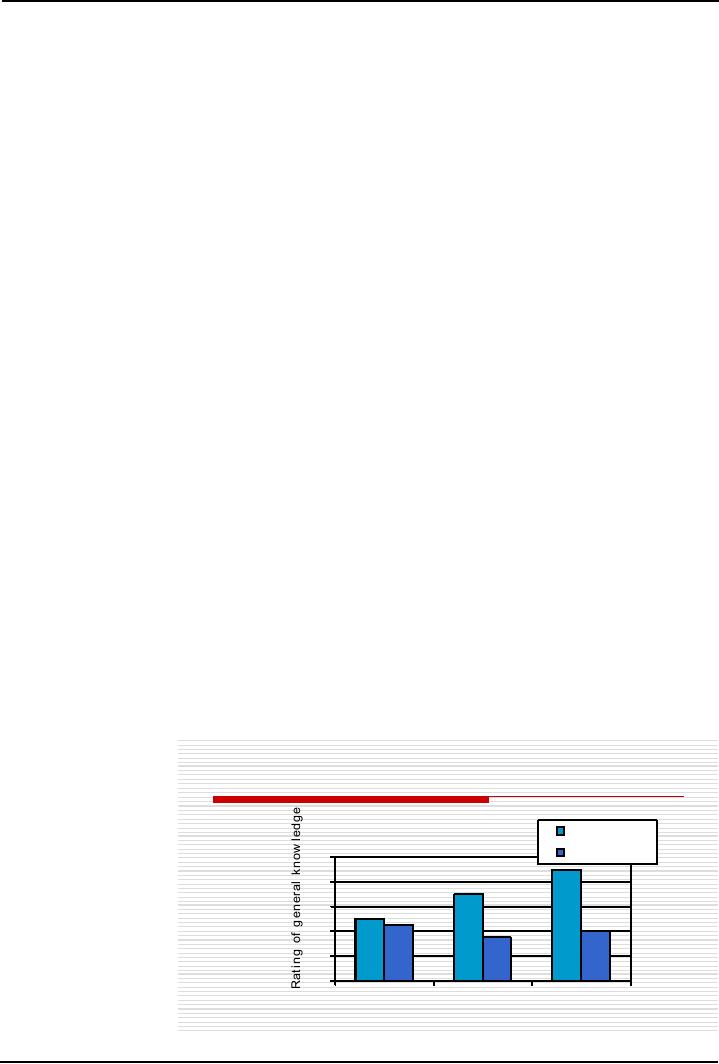 |
ATTRIBUTION ERRORS:Biases in Attribution, Cultural differences |
| << ATTRIBUTION:The locus of causality, Stability & Controllability |
| SOCIAL COGNITION:We are categorizing creatures, Developing Schemas >> |

Social
Psychology (PSY403)
VU
Lesson
17
ATTRIBUTION
ERRORS
Aims
Introduce
the basic concept of causal
judgment and errors involved in
this process
Objectives
·
Understanding
primary biases in attributions
fundamental attribution error,
actor-observer bias,
false
consensus effect, self-serving
attribution error, and ultimate
attribution error
·
Discussing
implication of attribution
errors
Biases
in Attribution
·
Kelley's
model is idealized to explain
causes of behaviour, but we
really are naive
scientists.
·
Although
people follow these rules
and deduce causality
logically in some circumstances, a number
of
attribution
biases and `errors' often
occur
·
Considerable
research suggests that there
are several prominent biases in the ways
we make causal
attributions
The
process of making causal attributions
entails several "biases."
First, attributers seem too
ready to
assume
that another person's traits
correspond with his or her
words and deeds. This
"correspondence
bias"
occurs because people
overlook situational constraints,
have unrealistic expectations
for what
other
people are willing and able
to do, overemphasize the
link between the person
and his or her
behavior,
and adjust their initial
attributions inaccurately when
they are "cognitively busy."
The
fundamental
attribution error is the
correspondence bias.
A.
The fundamental attribution
error
Ichheiser
(1940) maintained long time
ago that "In everyday life
interpreting individual behaviour in
the
light
of personal factors rather than in the light of
situational factors must be considered the
fundamental
source
of misunderstanding personality in our
time". More than 30 years
later, Ross (1977) renamed
this
tendency
to make internal rather than external
attributions for peoples'
behaviour. He maintained that
the
fundamental
attribution error is the tendency to overestimate the
impact of dispositional causes
and
underestimate
the impact of situational causes on
other person's behaviour. Ross and
his colleagues devised
a
simulated TV quiz game in
which students were randomly
assigned to serve as either quizmaster
or
contestants.
The quizmasters would ask 10
challenging but fair questions
from the contestants. The
results
showed
that observers and contestants
both rated the quizmasters as more
knowledgeable despite the
process
of random
Fundamental
attribution error and
selection
for serving as
either
contestant or
TV
quiz game
quizmaster.
Figure 1
illustrates
this
Ross
et al. (1977)
experiment.
Quizmast
er
Cont
estant
10
Explanations
for the
8
fundamental
attribution
error
6
4
·
The
fundamental
2
attribution
error
0
may
occur because
Quizmaster
Contestant
Observer
people
make
ratings
ratings
ratings
dispositional
attributions
automatically
70

Social
Psychology (PSY403)
VU
·
We
only later use situational
information
to discount it.
·
Predictability
Need: It gives us greater confidence
that we can accurately predict
behaviour
·
Perceptual
salience
The
person being observed is the most
perceptually salient aspect of the
situation (i.e., moving,
talking,
etc.) and so an internal (person) attribution
becomes much more
accessible.
Taylor
and Fiske (1975) tested this
hypothesis by varying the seats of 6
people who observed 2
actors
engaged
in carefully arranged 5-minute
conversation. Observers were seated so
that faced actor A, B
or
both. Then they were asked
whom they thought had the
most impact on the
conversation.
Results:
whichever actor they faced was
perceived as the most
important of the dyad.
Cultural
differences
·
The
fundamental attribution error is more
common in individualist cultures than
collectivist (Miller,
1984)
suggesting that social learning may
also contribute to the explanation of the
effect.
·
People
in non-Western cultures are more likely to
take situational and contextual
information into
account
·
However,
cultures do not create people
with rigidly independent or
collectivistic styles, situational
factors
can trigger spontaneous self
concepts
B.
The actor-observer
bias
·
People
tend to attribute their own
behaviour to external causes
but that of others to
internal
·
Actors
overestimate
the importance of the situation in
explaining their own
behaviours: actors
look
at
the situation, observers look at
actors.
·
This
bias suggests that observers
overestimate
the importance of an actor's dispositions
for causing
the
actor's behavior;
·
Access
to different information: actors have
more background about
themselves
·
Actors
overestimate
the importance of the situation in
explaining their own
behaviors Perceptual:
actors
look at the situation, observers
look at actors
Storms's
Stusy (1973)
ν
2
participants as observers, 2 as
`conversational' actors
ν
Observers
focus attention only on the actor they
were facing
ν
Observers
emphasized dispositional factors when
explaining actor's
behaviour
ν
Actors
emphasized situational factors when
explaining their own
behaviour
Perceptual
salience: Actors attention is away
from them (external), observers
attention is on actor
(internal)
ν
The
actor-observer bias is reversed when
participants shown videotapes of their
opposite perspective
before
making attributions
Actors
saw own faces and
made an internal attribution
C.
False Consensus Effect
The
attributers draw less
dispositional inferences about
their own behaviour than
about another
person's
behaviour, because their own
behaviours is less visually
salient and because they
believe that
their
own choices are more
prevalent than they are, or
at least more prevalent than
they are viewed by
other
people who choose
differently. False consensus occurs
because our own behaviours
are relatively
easy
to imagine, because we usually
interact with "our own
kind," and because it makes us
feel good
about
ourselves.
71

Social
Psychology (PSY403)
VU
Why
do we tend to see our own
behaviour and opinions as
typical?
·
We
have a biased sample of similar
others among our
friends
·
Our
own opinions are more
accessible/ salient
·
We
fail to realize that our
choices reflect our construal
and that others have
different perceptions
·
We
are motivated to see ourselves as
normal & good.
D.
The Self-Serving Attribution
Bias (SSAB)
We
are not coldly rational
informational processors of information.
When our performance results
in
either
success or failure, we tend to
take credit for our
successes but deny blame for
our failures. Self-
serving
biases include attributing
our own (but not
other people's) successes to
internal-stable
factors
and our own (but
not other people's) failures
to external-unstable factors, taking
more
credit
than is due for desirable
outcomes, and unrealistic
(but useful) optimism about
our life
prospects.
Where we will assign the locus of
causality?: IQ, effort vs.
unreasonable professor or luck?
According
to Olson & Ross (1988), we make
internal attributions for
our successes (e.g., I'm
intelligent)
and external attributions for
failures (e.g., it was a particularly
hard exam)
Explanations
of the SSAB
ν
Motivational
Internally
attributing success and externally
attributing failure protects
self-esteem
ν
Cognitive
We
expect to do well in most things,
which make it logical to attribute
failure to external sources
(Taylor
& Riess, 1989).
E.
The ultimate attribution
error
We
attribute our group's
successes to internal factors and
other group's successes to
external factors
(Hewstone,
1990)
Accuracy
of judgments -- Our judgments are both accurate and
inaccurate.
·
We
tend to be accurate about external
visible attributes.
·
We
are less accurate about inferred internal
states (traits or
feelings).
Implications
The
process and biases of causal attribution
have important consequences
for deciding what
caused
our own and other
people's success and failure
and for attributing
responsibility or blame.
When
making attributions for
success and failure, people
who attribute their own
success to internal
causes
and their own failure to
external causes do more for
their self-esteem than do people
who make
the
opposite attributions. People
who attribute their own
success to stable causes and
their own
failure
to unstable causes have more
optimistic expectations for
the future than do people
who make
the
opposite attributions. Also,
people who attribute another
person's suffering to
uncontrollable
causes
have more pity, less
anger, and less urge to
help than do people who
attribute another person's
suffering
to controllable causes.
Attributions
of responsibility influence how
people react to personal and
social problems.
Dispositional
attributions often elicit
more punitive reactions than
do situational attributions
for
disaster
victims, quarrelling spouses,
drivers in automobile accidents,
and for people with
liver disease
and
other health problems.
Prospective jurors also make
different attributions and
award different
sentences
for rape depending on
characteristics of the victim.
Finally, attributions for
murder differ
depending
on characteristics of the victim
that the killer did
not know and depending on
the culture.
People
from collectivist cultures are
less biased toward
dispositional attributions for
murder than are
people
from individualist
cultures.
Reading
1.
Franzoi, S. (2003). Social
Psychology. Boston:
McGraw-Hill. Chapter 4.
2.
Lord, C.G. (1997). Social
Psychology. Orlando:
Harcourt Brace and Company. Chapter
4.
72
Table of Contents:
- INTRODUCTION TO SOCIAL PSYCHOLOGY:Readings, Main Elements of Definitions
- INTRODUCTION TO SOCIAL PSYCHOLOGY:Social Psychology and Sociology
- CONDUCTING RESEARCH IN SOCIAL PSYCHOLOGY:Scientific Method
- CONDUCTING RESEARCH IN SOCIAL PSYCHOLOGY:Evaluate Ethics
- CONDUCTING RESEARCH IN SOCIAL PSYCHOLOGY RESEARCH PROCESS, DESIGNS AND METHODS (CONTINUED)
- CONDUCTING RESEARCH IN SOCIAL PSYCHOLOGY OBSERVATIONAL METHOD
- CONDUCTING RESEARCH IN SOCIAL PSYCHOLOGY CORRELATIONAL METHOD:
- CONDUCTING RESEARCH IN SOCIAL PSYCHOLOGY EXPERIMENTAL METHOD
- THE SELF:Meta Analysis, THE INTERNET, BRAIN-IMAGING TECHNIQUES
- THE SELF (CONTINUED):Development of Self awareness, SELF REGULATION
- THE SELF (CONTINUE…….):Journal Activity, POSSIBLE HISTORICAL EFFECTS
- THE SELF (CONTINUE……….):SELF-SCHEMAS, SELF-COMPLEXITY
- PERSON PERCEPTION:Impression Formation, Facial Expressions
- PERSON PERCEPTION (CONTINUE…..):GENDER SOCIALIZATION, Integrating Impressions
- PERSON PERCEPTION: WHEN PERSON PERCEPTION IS MOST CHALLENGING
- ATTRIBUTION:The locus of causality, Stability & Controllability
- ATTRIBUTION ERRORS:Biases in Attribution, Cultural differences
- SOCIAL COGNITION:We are categorizing creatures, Developing Schemas
- SOCIAL COGNITION (CONTINUE…….):Counterfactual Thinking, Confirmation bias
- ATTITUDES:Affective component, Behavioral component, Cognitive component
- ATTITUDE FORMATION:Classical conditioning, Subliminal conditioning
- ATTITUDE AND BEHAVIOR:Theory of planned behavior, Attitude strength
- ATTITUDE CHANGE:Factors affecting dissonance, Likeability
- ATTITUDE CHANGE (CONTINUE……….):Attitudinal Inoculation, Audience Variables
- PREJUDICE AND DISCRIMINATION:Activity on Cognitive Dissonance, Categorization
- PREJUDICE AND DISCRIMINATION (CONTINUE……….):Religion, Stereotype threat
- REDUCING PREJUDICE AND DISCRIMINATION:The contact hypothesis
- INTERPERSONAL ATTRACTION:Reasons for affiliation, Theory of Social exchange
- INTERPERSONAL ATTRACTION (CONTINUE……..):Physical attractiveness
- INTIMATE RELATIONSHIPS:Applied Social Psychology Lab
- SOCIAL INFLUENCE:Attachment styles & Friendship, SOCIAL INTERACTIONS
- SOCIAL INFLUENCE (CONTINE………):Normative influence, Informational influence
- SOCIAL INFLUENCE (CONTINUE……):Crimes of Obedience, Predictions
- AGGRESSION:Identifying Aggression, Instrumental aggression
- AGGRESSION (CONTINUE……):The Cognitive-Neo-associationist Model
- REDUCING AGGRESSION:Punishment, Incompatible response strategy
- PROSOCIAL BEHAVIOR:Types of Helping, Reciprocal helping, Norm of responsibility
- PROSOCIAL BEHAVIOR (CONTINUE………):Bystander Intervention, Diffusion of responsibility
- GROUP BEHAVIOR:Applied Social Psychology Lab, Basic Features of Groups
- GROUP BEHAVIOR (CONTINUE…………):Social Loafing, Deindividuation
- up Decision GROUP BEHAVIOR (CONTINUE……….):GroProcess, Group Polarization
- INTERPERSONAL POWER: LEADERSHIP, The Situational Perspective, Information power
- SOCIAL PSYCHOLOGY APPLIED: SOCIAL PSYCHOLOGY IN COURT
- SOCIAL PSYCHOLOGY APPLIED: SOCIAL PSYCHOLOGY IN CLINIC
- FINAL REVIEW:Social Psychology and related fields, History, Social cognition